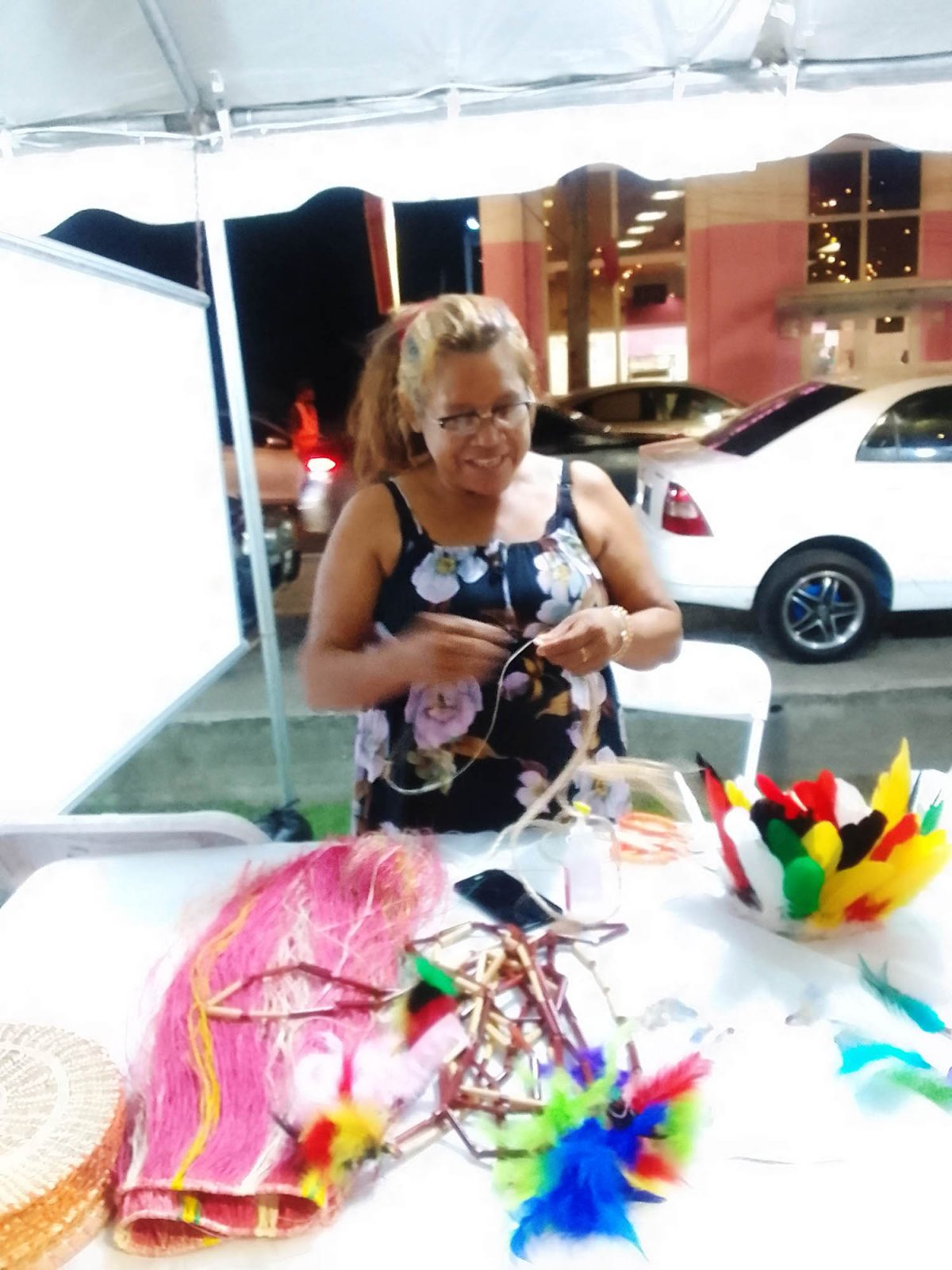Engaging craftsmen and women above the din of the music blaring from speakers mounted on a giant truck on Main Street last Saturday evening felt, at times, like ‘sheer torture.’ It would be altogether surprising if the large crowd that turned up to view the displays and perhaps make some purchases would not have been less than pleased to find that their pursuit was being compromised by the deafening decibel level of the music.
Last Saturday evening, the two decidedly didn’t ‘go together. Christmas, as we are inclined to say around this time of year, is “just around the corner”, so that some of the visitors to last Saturday’s Heritage event would have turned up with Cassareep on their minds. That would not have been all, however. The available, decidedly pleasing evidence suggests that indigenous craft and cuisine have, over time, found their way into the mainstream market whilst some of the cuisine is ‘getting there.’ Last Saturday, therefore, appeared to have all of the makings of a potentially lucrative trading day.
The Annual Heritage Month product display would appear to be finding its way into mainstream contemporary fashion, the evidence manifesting itself not just in the increasing presence, particularly, though not exclusively in mainstream trading places in Georgetown. Pauline Chance, a Kabakaburi Pomeroon river resident and veteran trader told the Stabroek Business that the Tibisiri skirts and the macaw-feathered Head Dresses that she had brought to Georgetown this time around were intended to target the children participating in the various annual Heritage events usually staged in the Capital. One of more than a dozen craftsmen and women who turned up with their offerings on Saturday evening Pauline, at 56, considers herself as being on a mission to help sustain the indigenous craft tradition.
Like others in the trade, she considers Heritage Month as being pivotal both to the tradition as well as to her own entrepreneurial trading pursuits. Her products, mostly Place Mats, Fans, Hammocks, Skirts, ‘Bras’, Head Bands and Bags are ‘turned out’ mostly from Tibisiri. Up to this time, she says, her Heritage Month trips to the capital have been mostly successful.
The clue to her success, she says, has been her creation of a clientele that she strives never to let down.
She had been introduced to the craft by her mother at the age of seven and the skills learnt had stayed with her. As a ‘grown up’ she became a ‘regular’ at the Charity Market which has earned a reputation for throwing up traditional craft shops. The Charity Market, she says, affords a brisk trade in indigenous craft during the Christmas and Easter holiday periods.
Her formal schooling, she said, had only begun at the age of twelve, when she had earned enough to buy her own school uniform. Formal schooling didn’t last very long, however. Once she got to the classroom she became the butt of jokes given just how far behind she was.
In a sense it was ‘school’ that caused her to discover what her calling was. It was by no means easy. Once she had returned to work with her mother she began to discover how tough and tiring it was. That which was not accomplished in one day had to be returned to the next day in the wee hours of the morning. There were days in which she had to traverse miles of swamp to gather spire from Tibisiri to create straw. After the spire is separated from the Eta Palm it is stripped, boiled and cooled. It is then removed from the cold water, squeezed then dried for four days. It is demanding work, Pauline says. These days she buys Tibisiri from ‘manufacturers’ in the village. Pauline is a mother of seven children – all of whom attend school.






